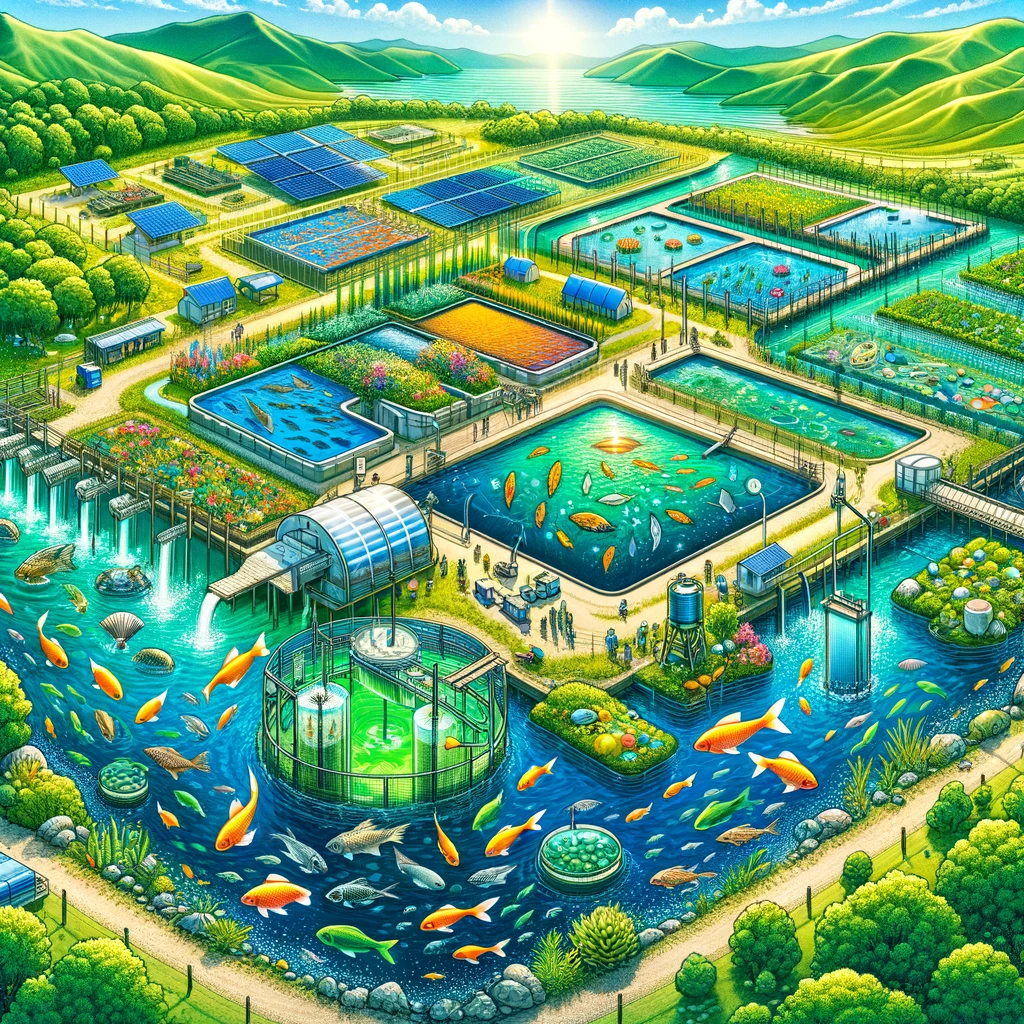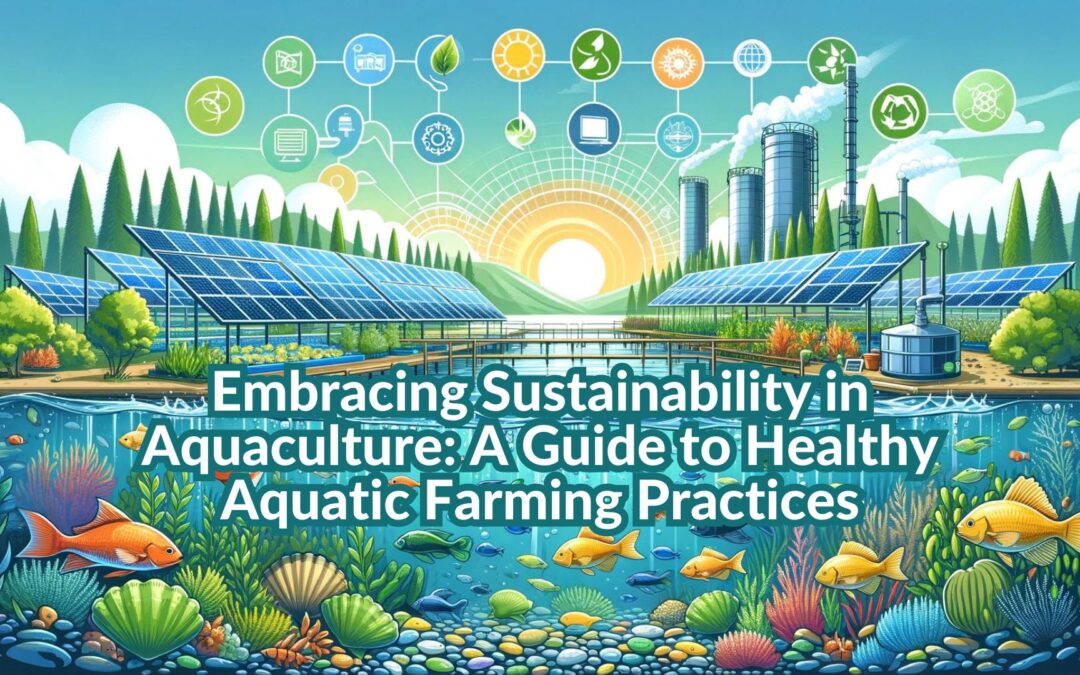Sustainability in Aquaculture is a key focus of our guide, detailing essential strategies for maintaining healthy and environmentally friendly aquatic farms.
The global demand for seafood is on an upward trajectory, highlighting the need for sustainable aquaculture practices. As we venture into the depths of aquatic farming, it’s crucial to adopt strategies that ensure not only the health of aquatic species but also the sustainability of their ecosystems. This guide outlines essential practices that can transform your aquaculture operation into a beacon of sustainability and efficiency.
Strong Biosecurity Measures: The First Line of Defense
Understanding Biosecurity Biosecurity acts as the protective shield around your aquaculture operation. It’s about preventing diseases before they start and safeguarding your aquatic species against potential threats.
Implementing Biosecurity To achieve this, strict access control, rigorous inspection of incoming water sources, and stringent sanitation protocols are non-negotiable. By fortifying your operation with these measures, you’re setting the stage for a thriving, disease-free environment.
Vaccination: Proactive Disease Prevention
The Role of Vaccines Vaccination is akin to arming your aquatic species with a shield against diseases. It’s a proactive approach to health management, reducing the reliance on antibiotics and fostering a healthier aquatic population.
Adopting Vaccination Strategies Incorporating vaccination into your routine is not just about disease prevention; it’s about embracing a holistic approach to aquatic health. This strategy is especially crucial in intensive farming systems where the risk of disease outbreaks is higher.
Surveillance and Early Disease Detection: Keeping a Watchful Eye
Importance of Regular Monitoring Consistent surveillance and early detection of diseases are pivotal. Regular health checks and monitoring enable the early identification of potential health issues, allowing for prompt intervention.
Strategies for Effective Surveillance This involves setting up a robust system for health monitoring, including frequent sampling and analysis. Early detection paves the way for timely measures, such as treatment or adjustments in management practices, minimizing the impact of diseases.
Genetic Improvement: Enhancing Disease Resistance
Advancing Through Genetics The future of sustainable aquaculture lies in genetic improvement. By selectively breeding aquatic species for enhanced disease resistance, we can develop stronger, more resilient populations.
Benefits of Genetic Selection This not only reduces the vulnerability of aquatic species to diseases but also contributes to the environmental sustainability of aquaculture practices. Investing in genetic improvement is a forward-thinking approach that ensures the long-term viability of aquatic farming.
Conclusion: Charting the Course Towards Sustainable Aquaculture
Sustainable aquaculture is an achievable goal, requiring commitment, innovation, and a willingness to adopt best practices. By prioritizing strong biosecurity measures, vaccination, surveillance, and genetic improvement, you can significantly enhance the health and sustainability of your aquaculture operation. This guide is not just a pathway to sustainable aquatic farming; it’s a call to action for all aquaculture practitioners to contribute to a healthier, more sustainable future for our global seafood supply. Let’s embrace these strategies and lead the charge toward a more sustainable aquaculture industry.
Join the Sustainable Aquaculture Movement:
As we navigate the challenges and opportunities within the aquaculture industry, the path toward sustainability and environmental stewardship becomes increasingly critical. Your involvement and commitment can make a monumental difference. Here’s how you can be a part of this transformative journey:
Stay Informed and Educate Others
Knowledge is power. By staying informed about the latest sustainable practices, research, and technologies in aquaculture, you empower yourself and others to make informed decisions. Share your knowledge, engage in conversations, and spread awareness about the importance of sustainable aquaculture practices.

Implement Sustainable Practices
Whether you are a seasoned aquaculturist or just starting, implementing sustainable practices in your operations is a significant step forward. Adopt biosecurity measures, consider the health and well-being of your aquatic species through vaccination and disease management, and explore genetic improvements for disease resistance. Every step towards sustainability counts.
Support Sustainable Aquaculture Products
As consumers, you wield immense power through your purchasing decisions. By choosing products from sustainable aquaculture sources, you encourage more producers to adopt responsible practices. Look for certifications and labels that indicate sustainable sourcing and support those who prioritize the health of aquatic species and their environments.
Engage with Community and Industry Initiatives
Collaboration is key to driving change. Engage with community groups, industry associations, and sustainability initiatives. Sharing experiences, challenges, and solutions can lead to innovative practices and stronger advocacy for sustainable aquaculture.
Advocate for Policy and Regulation
Support policies and regulations that promote sustainable aquaculture practices. Engage with policymakers, participate in public forums, and contribute to the dialogue on sustainable regulations. Your voice can influence the development of frameworks that ensure the industry’s sustainability and resilience.
Your Role in Shaping the Future
The journey towards sustainable aquaculture is a collective endeavor that requires the participation and dedication of everyone involved in the industry—from producers to consumers, policymakers to educators. By taking action today, you contribute to a healthier, more sustainable future for our aquatic ecosystems and ensure a stable, resilient food supply for generations to come.
Take the step. Be the change. Join the movement towards sustainable aquaculture. Together, we can make a difference. Join our EAT Community for more learning opportunities, live webinars, and access to many other information-packed resources.
Related Articles and Resources:
- Shrimp Aquaculture and the Increasing Demand for Seafood
- Understanding Aquatic Ecology and Biodiversity
- 5 Things to Know About Aquaculture Farming
- Sustainable Aquaculture – Navigating the Waters Between Economic Growth & Environmental Stewardship
- Environmental Stewardship: A Conceptual Review and Analytical Framework
- How can I engage with policymakers?



